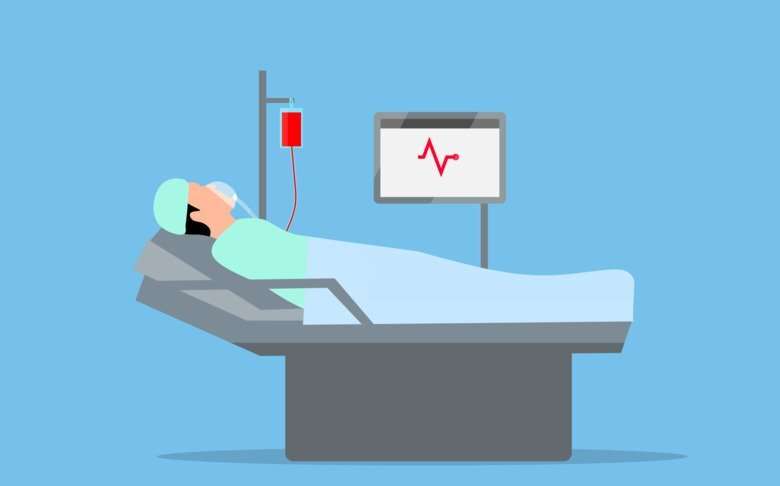Critical illness myopathy is a common condition in intensive care patients, finds study

Critical illness myopathy (CIM) is a common complication affecting ventilator-treated intensive care patients, which can lead to increased mortality/morbidity, prolonged hospital care, impaired patient quality of life, and increased health care costs. The study was recently published in the Journal of Cachexia, Sarcopenia and Muscle.
Over the past 65 years, intensive care units (ICUs) have undergone a significant development that has resulted in improved survival rates. But life-saving efforts are also accompanied by negative consequences for ICU patients, affecting skeletal muscle systems, including the critical illness myopathy (CIM) with muscle wasting and paralysis/paresis.
The incidence of CIM is about 30% among ICU patients, and almost 100% in neuro-ICU patients exposed to prolonged controlled mechanical ventilation. Moreover, the negative consequences have become increasingly apparent during the COVID-19 pandemic.
The investigation into the onset and development, diagnosis and effective interventions are insufficient due to poor diagnostic methods, according to Lars Larsson, Professor at the Department of Physiology and Pharmacology, Karolinska Institutet, and senior consultant at the Department of Clinical Neurophysiology at Karolinska University Hospital, who reported on the first case in Scandinavia of CIM in an ICU patient almost three decades ago.
"At that time, patients were misdiagnosed and are still frequently being misdiagnosed. Since the identification of the first patient, we have managed to improve diagnostic methods, basic understanding of underlying mechanisms in experimental and clinical studies and evaluated novel intervention strategies," says Lars Larsson.
Recently, the group conducted a prospective clinical study on CIM in ten neuro-ICU patients requiring long-term controlled mechanical ventilation in collaboration with Drs. Bo-Michael Bellander and David Nelson. The recruited patients were followed longitudinally with repeated collection of muscle samples and body fluids, followed by single muscle fiber contractile measurements, routine electrophysiological measurements, and time-course multi-omics study. Myosin loss was observed in the absence of any significant changes in electrophysiology with substantial negative consequences for muscle fiber force-generation capacity, morbidity, mortality, and health care costs.
"According to the single muscle fiber contractile measurements, we found loss of muscle function and depletion of the motor protein myosin in all ten patients exposed to long-term mechanical ventilation and immobilization," says Nicola Cacciani, the senior researcher in the group and the first author of the study.
"We hope this study could form the basis for future intervention studies aiming at reducing the negative consequences of modern critical care, improving intensive care unit patient quality of life and the financial burden of modern critical care," says Ya Wen, postdoctoral researcher in the group.
More information: Nicola Cacciani et al, A prospective clinical study on the mechanisms underlying critical illness myopathy—A time‐course approach, Journal of Cachexia, Sarcopenia and Muscle (2022). DOI: 10.1002/jcsm.13104


















